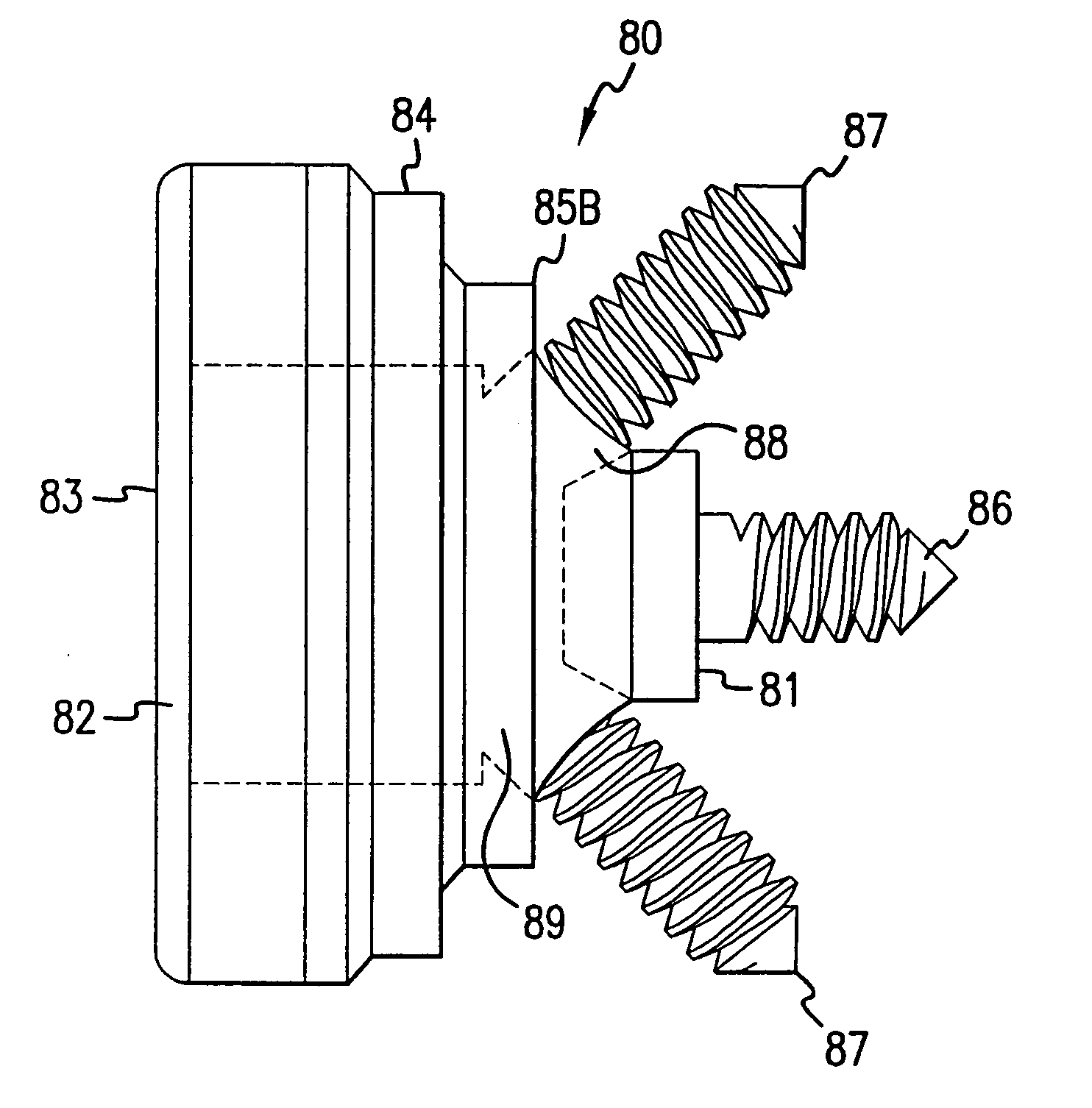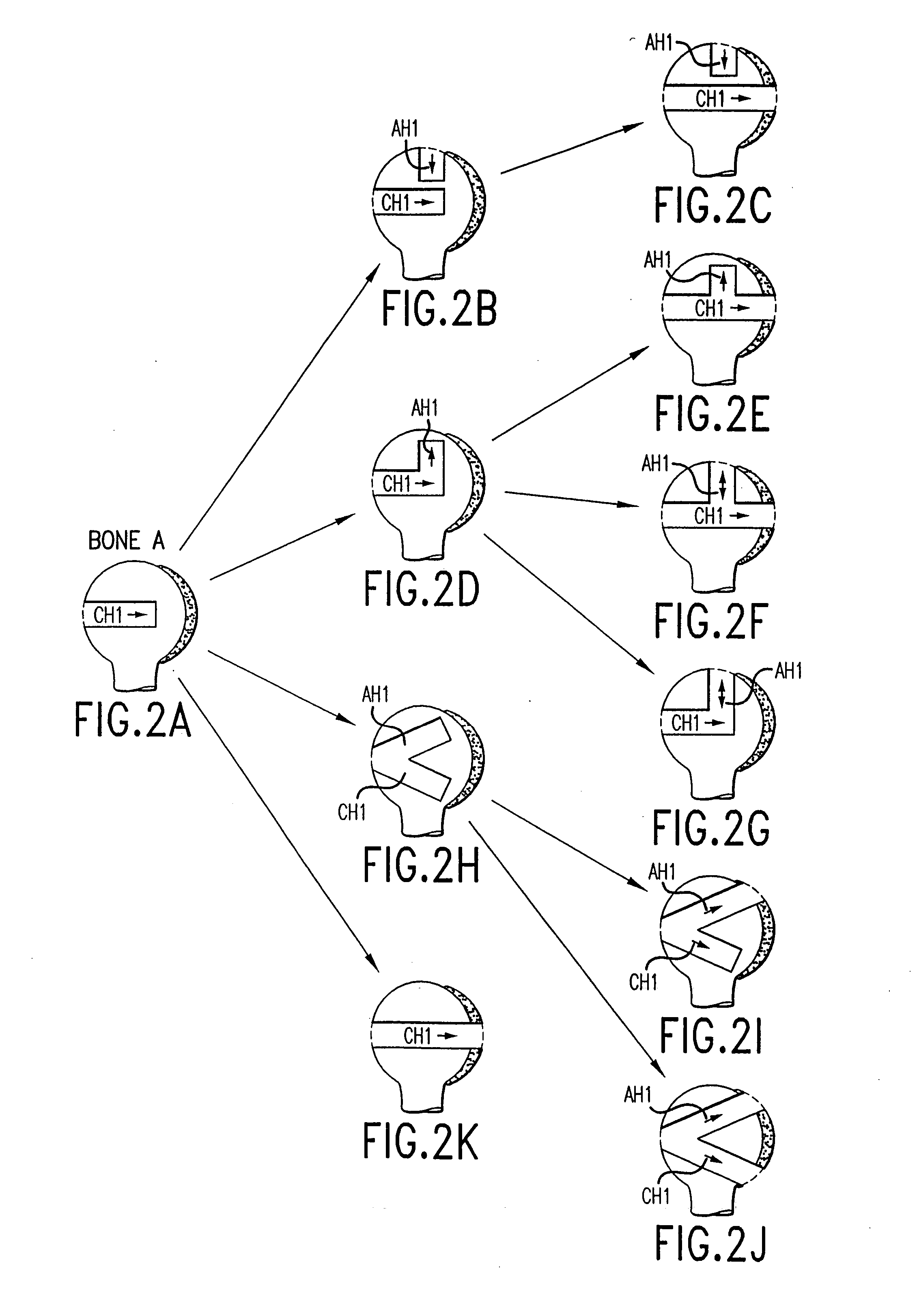Transosseous core approach and instrumentation for joint replacement and repair
a transosseous core and joint technology, applied in the field of transosseous core approach for joint replacement and/or treatment, can solve the problems of affecting the healing effect of the joint, so as to facilitate the treatment of the articular surface and/or other structures in the joint, and without substantially compromising the physical integrity and physiological viability of the join
- Summary
- Abstract
- Description
- Claims
- Application Information
AI Technical Summary
Benefits of technology
Problems solved by technology
Method used
Image
Examples
Embodiment Construction
[0049] The present invention can be used to treat problems that occur in almost any joint, in particular diarthroidal joints. A common element or feature of the present invention, regardless of which joint is treated, is that the joint surface(s) to be treated are approached through a first bone, i.e., the transversed bone. This is accomplished by creating an exposure through a channel or hole that is made in the transversed bone overlying the joint surface to be addressed. Preferably, the channel is made by a transosseous core, which core can be replaced after treatment or placement of an implant to reconstitute the integrity of the bone substance or surface. In this manner, the joint surface to be treated is approached from the “back side” such that highly invasive dislocation of the joint and wide exposure incisions are not required to create the necessary access. Depending upon the degree of treatment necessary, the present invention also avoids or minimizes in appropriate cases...
PUM
 Login to View More
Login to View More Abstract
Description
Claims
Application Information
 Login to View More
Login to View More - R&D
- Intellectual Property
- Life Sciences
- Materials
- Tech Scout
- Unparalleled Data Quality
- Higher Quality Content
- 60% Fewer Hallucinations
Browse by: Latest US Patents, China's latest patents, Technical Efficacy Thesaurus, Application Domain, Technology Topic, Popular Technical Reports.
© 2025 PatSnap. All rights reserved.Legal|Privacy policy|Modern Slavery Act Transparency Statement|Sitemap|About US| Contact US: help@patsnap.com



